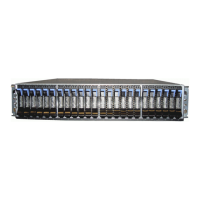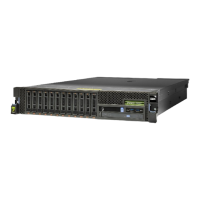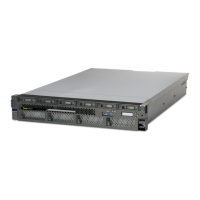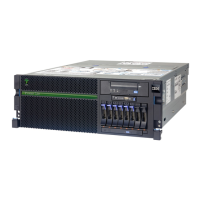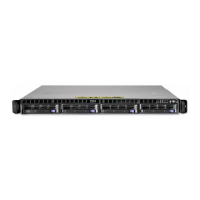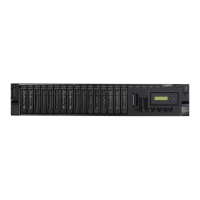Chapter 2. Architecture and technical overview 45
Draft Document for Review May 28, 2009 1:59 pm 4405ch02 Architecture and technical overview.fm
Table 2-8 on page 45 shows comparing Parallel SCSI to SAS.
Table 2-8 Comparing Parallel SCSI to SAS
2.8.3 iSCSI
iSCSI is an open, standards-based approach by which SCSI information is encapsulated
using the TCP/IP protocol to allow its transport over IP networks. It allows transfer of data
between storage and servers in block I/O formats (that is defined by iSCSI protocol) and thus
enables the creation of IP SANs. iSCSI allows an existing network to transfer SCSI
commands and data with full location independence and defines the rules and processes to
accomplish the communication. The iSCSI protocol is defined in iSCSI IETF draft-20. For
more information about this standard, see:
http://tools.ietf.org/html/rfc3720
Although iSCSI can be, by design, supported over any physical media that supports TCP/IP
as a transport, today's implementations are only on Gigabit Ethernet. At the physical and link
level layers, iSCSI supports Gigabit Ethernet and its frames so that systems supporting iSCSI
can be directly connected to standard Gigabit Ethernet switches and IP routers. iSCSI also
enables the access to block-level storage that resides on Fibre Channel SANs over an IP
network using iSCSI-to-Fibre Channel gateways such as storage routers and switches. The
iSCSI protocol is implemented on top of the physical and data-link layers and presents to the
operating system a standard SCSI Access Method command set. It supports SCSI-3
commands and reliable delivery over IP networks. The iSCSI protocol runs on the host
initiator and the receiving target device. It can either be optimized in hardware for better
performance on an iSCSI host bus adapter (such as FC 5713 and FC 5714 supported in IBM
System p servers) or run in software over a standard Gigabit Ethernet network interface card.
IBM System p systems support iSCSI in the following two modes:
Hardware Using iSCSI adapters (see “IBM iSCSI adapters” on page 46).
Parallel SCSI SAS
Architecture Parallel, all devices connected
to shared bus
Serial, point-to-point, discrete
signal paths
Performance 320 Mb/s (Ultra320 SCSI),
performance degradeds as
devices added to shared bus
3 Gb/s, roadmap to 12 Gb/s,
performance maintained as
more devices added
Scalability 15 drives Over 16,000 drives
Compatibility Incompatible with all other drive
interfaces
Compatible with Serial ASA
(SATA)
Max. Cable Length 12 meters total (must sum
lengths of all cables used on
bus)
8 meters per discrete
connection, total domain
cabling hundreds of meters
Cable From Factor Multitude of conductors adds
bulk, cost
Compact connectors and
cabling save space, cost
Hot Pluggability No Yes
Device Identification Manually set, user must ensure
no ID number conflicts on bus
Worldwide unique ID set at time
of manufacture
Termination Manually set, user must ensure
proper installation and
functionality of terminators
Discrete signal paths enable
device to include termination by
default
